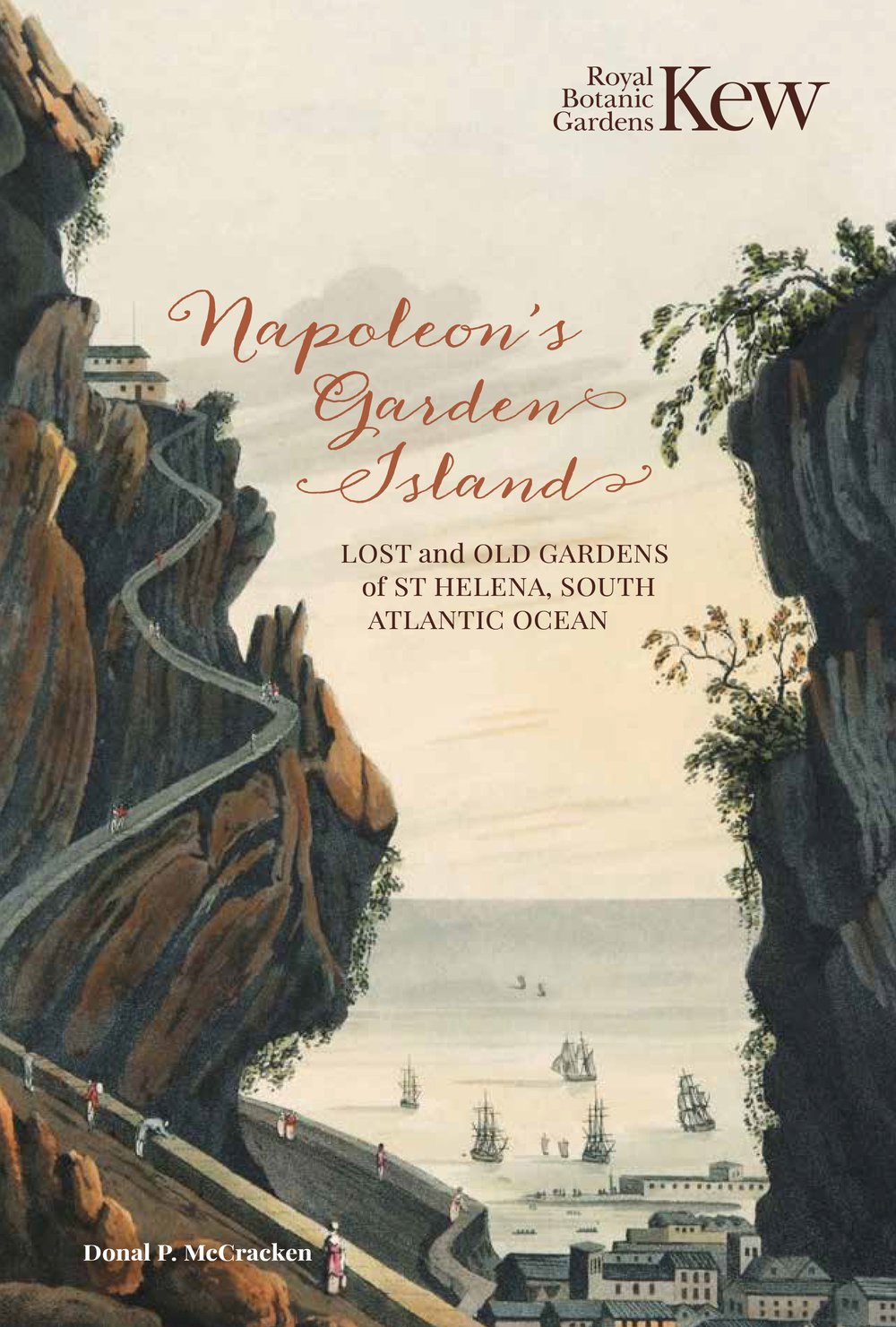Napoleon’s Garden Island
Lost and old gardens of St Helena, South Atlantic Ocean

There is more to St Helena than an exiled emperor; the tiny island in the middle of the wild South Atlantic Ocean has a rich garden heritage and an extraordinarily diverse flora, both exotic and endemic. This was the consequence of St Helena being the stopover for the vast East India Company fleets from the east on the way to Europe, their cargos carrying, along with spices, plants from China, Malaysia and India.
In the age of sail only a small proportion of plants survived lengthy sea voyages, so plants being transported north were rested in gardens on the island before thefinal leg of their voyage. In this way Jamestown became a storeroom for plants coming in from the east and south Asia, resting in the gardens and then being shipped on to botanic gardens and wealthy collectors, or to be trialled for horticulture or agricultural economic potential. And some of these plants remained, giving the 47 square-mile (122 sq km) island a controversially globally diverse flora today.
St Helena became a botanical hub and the East India Company and private plantation houses on the island developed extraordinarily botanically diverse gardens, which were maintained by enslaved labour and Chinese gardeners. This included the now re-established Emperor Napoleon’s Garden.

Donal McCracken was born and educated in Ireland and is an emeritus professor of history at the University of KwaZulu-Natal in South Africa. His books include Gardens of Empire (Leicester University Press, 1997), Natal the Garden Colony (Frandsen Publishers, 1991), The Way to Kirstenbosch (National Botanical Institute, 1998) and Saving the Zululand Wilderness (Jacana Media, 2008). He was the first chair of the Durban Botanic Gardens Trust.
